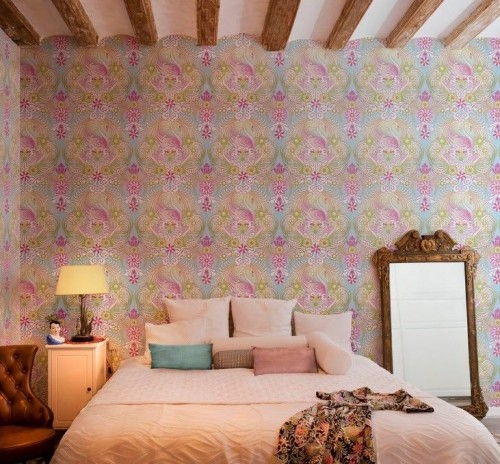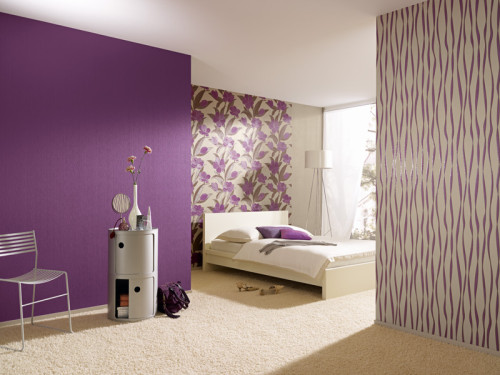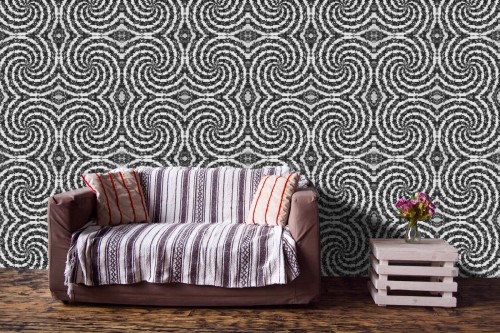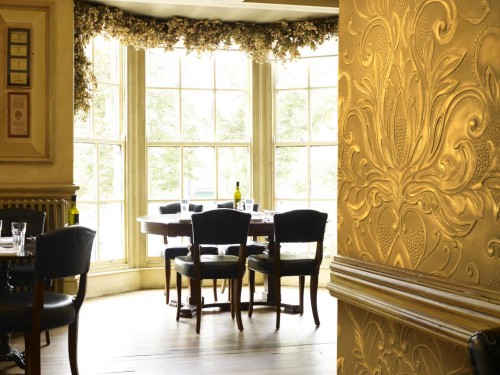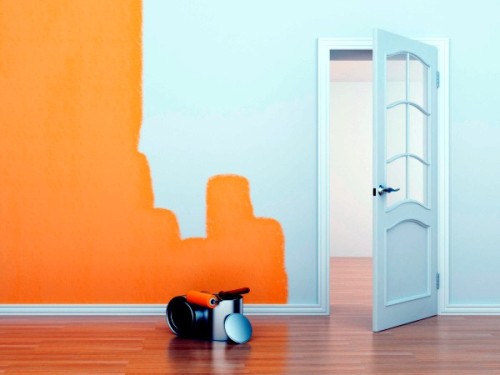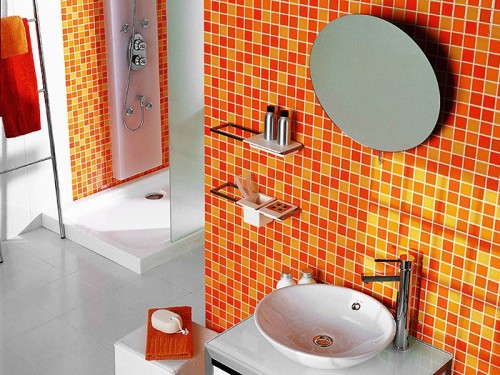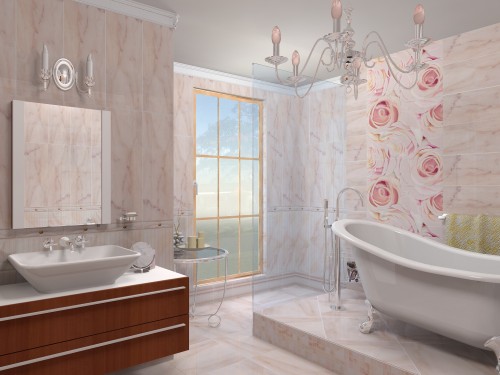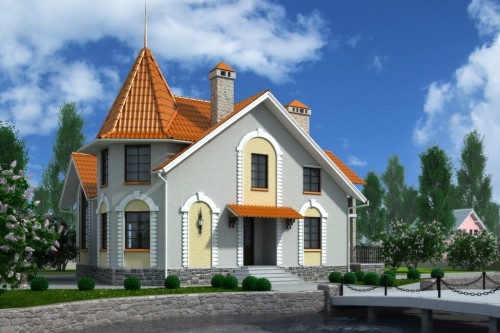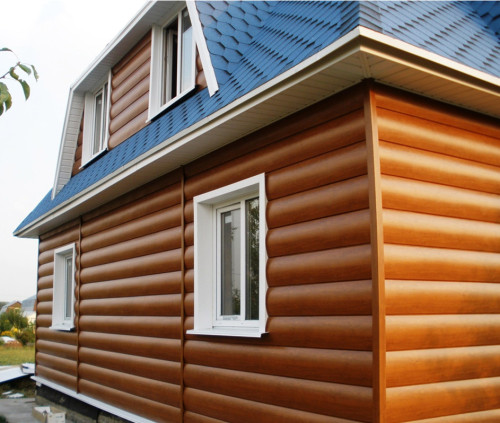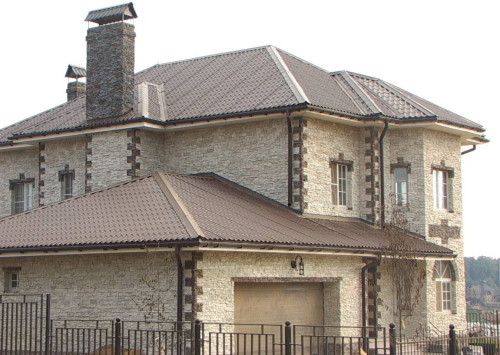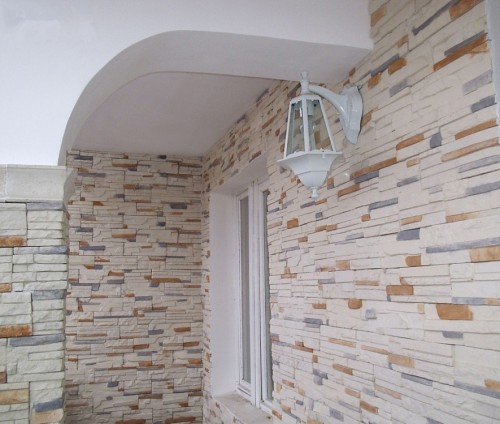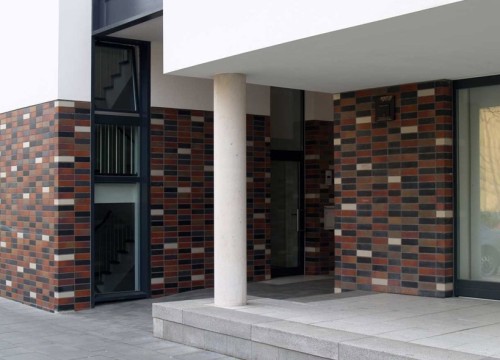
Wall Decoration Materials: Views and Methods Useful advice,Walls

Currently, it is increasingly harder to decide on the choice of materials for wall decoration. A huge selection, a variety of textures and shades leads many people to confusion. Like a lot, but how to find a golden middle and choose from a thousand what will not only save a family budget, but also to meet many requirements? Today we will talk about choosing materials for interior decoration of walls.
Content
What is the wall decoration? This is not only a tribute to fashion, but also a comfortable stay. From how correctly the used material for wall decoration will be chosen, the atmosphere in the room, the interior and general view will depend.
Materials for decorative wall decoration
Let's start with a review of the most simple and accessible to many customers of the material for finishing walls - wallpaper. Currently in building stores you can see thousands of various wallpapers, differing not only in color, but also texture, sizes and properties. You need to choose building materials not only because they just liked it, but also take into account a number of features. First of all, the wallpaper should be harmonized with interior and furniture, expand the space if the room is small. In addition, you need to pay attention to the stability of material to abrasion - that is, practicality.
Wallpapers are different, from the simplest, most popular in Soviet times - paper wallpapers, to modern materials and even wallpapers with a 3D pattern.
Types of wallpaper for wall decoration:
- Paper - Such a finishing material is suitable for pasting any surfaces, it is possible to salary with paper walls even a wooden surface (for example, walls and old cabinets / bedside tables). What is good this material? He misses the air perfectly, that is, "breathes." The cost is low, the choice is huge. There are cons: low wear resistance, you have to transfer the wallpaper almost every 2-3 years. If there is high humidity indoors, the wallpaper will quickly ruin. Wash the surface from pollution it is impossible, wallpaper quickly burn out in the sun. There are advantages: low cost, large selection, material easily stick yourself. You don't need to buy expensive glue, you can cook it alone from flour and water. Such wallpapers are more suitable for the children's room and bedrooms. Now you can see several types of paper wallpapers: single-layer (or smooth), duplex, structural wallpapers and paper wallpapers.
- Vinyl wallpaper - differ from paper durability, the material is durable, no moisture is afraid. The main advantage of this finishing material is durability and the ability to clean the pollution with a damp sponge. Such wallpapers can be stuck in the bathroom, kitchen and hallway. For the bedroom and the children's room, the wallpaper is not suitable, as they do not breathe, that is, they do not let the air. The composition of vinyl wallpaper: base (paper or on phlizelin), coated with a layer of polyvinyl chloride material. An embossed or drawing is embossed from above. Wallpapers are impregnated with anti-grib. You can see such types of vinyl wallpaper: with silk screening (slightly thin, imitation of silk fabric), foamed (wallpaper thick, with relief pattern), flat wallpaper (with a smooth surface, very durable), evaporated (solid vinyl, after heat treatment, The material is hypoallergenic, it is possible to imitation for various surfaces: from stone to plaster). Such wallpapers are resistant to burnout, do not deteriorate, they can be washed with a damp cloth with soft detergents. Due to the dense texture, the material is used to finish the walls and ceilings.
- Acrylic wallpaper is a type of vinyl foamed wallpaper, only with a spraying of polymeric material - acrylic (upper layer). Unlike vinyl wallpapers, acrylic material breathes, so such wallpapers can be pasted in the bedroom and children's room. Wallpapers are characterized by a high degree of wear resistance, resistant to moisture and abrasion, bacteria do not multiply on the surface. You can see a large selection of acrylic wallpaper: monophonic and with a pattern. You can cope with sticking on your own, you need to purchase special glue.
- Flizelin wallpaper - durable and thick, base - viscose. The material "breathes", environmentally friendly. Flislinic wallpapers can be used without the preparation of the wall (no need to apply the finish putty). Wallpaper on fliseline can also be decorative, with a drawing, relief and monophonic. If you saw bright monophonic smooth phlizelin wallpaper, then this material is intended for painting. You can change the color indoors with such wallpaper at least every year. There are disadvantages, the upper layer does not differ in durability, it is easily scratched. Everyone will be able to cope with wallpaper pasting, have special skills not needed. Such wallpapers can be glued onto a tree, any plaster, concrete, panels and drywall.
- Gymelomes are a mixture of fiberglass with quartz sand, lime and dolomite. The material is distinguished by a high degree of wear resistance, such wallpapers are very durable after complete drying, when applied - elastic. You can buy single-layer or two-layer wallpapers on a paper basis. The material is not lit, does not absorb moisture, is not subject to the attack of mold and fungi, it uses well to the air. You can stick such a finishing material both in the residential room and in the office.
- Fabric or textile wallpapers are designed for a bedroom, a cabinet and a living room. For the kitchen and the bathroom, such wallpapers are undesirable to stick, as they quickly absorb moisture and pollute. The basis of such wallpaper can be both tissue and paper with a layer of acrylic or vinyl. Designed for sticking to an ideally smooth surface.
- Modern finishing material - jute wallpaper (wooden base of a jute plant). Wallpapers are made on a paper basis with the addition of jute, with a different top coating (from tissue, vinyl, etc.). The choice of types of finishing materials for the walls is varied, these wallpapers do not burn out, they are not afraid of moisture, retain heat indoors. There are disadvantages - the material strongly absorbs odors and is not suitable for families in which there are pets.
- Modern materials for wall decoration are beaded wallpapers. The coating is unusual, it looks very impressive, you can stick on the walls, ceilings, arches, niches, furniture, interior doors, columns, etc. The basis of this finishing material is dense paper or phlizelin, the top coating is the glued beads. Such wallpapers do not fade, resistant to external damage, do not erase, reflect light well, paste on glue.
- Wallpaper "Linker" - a new material for finishing walls of houses and apartments. The surface is smooth and embossed. It is the wallpaper made of a dense paper base or tissue, the top coating - applying a plastic mass (a mixture of chopped sawdust or decorative resin with wax, butter and chalk with the addition of pigment). The main advantage of wallpaper - plasticity, preservation of surface relief, thermal resistance, environmental friendliness, high life. Recently, these wallpapers won popularity around the world, they are widely used to finish the premises and the creation of individual elements of the interior. The wallpaper is the wallpaper with a monophonic, without a painted facial surface, so that after sticking and complete drying, it was possible to stain the surface into the desired shade.
Materials for wall decoration in the bathroom and kitchen
Traditional materials for finishing walls in rooms with high humidity are not used as often as in the past century. Modern finishing materials came to replace the waterproof paint. A variety of choice and a large color scheme, an acceptable cost is the main advantage of popular materials for wall decoration in the bathroom and kitchen.
List of finishing options:
- staining of walls with waterproof paint;
- laying of ceramic tiles;
- pasting waterproof wallpaper;
- the use of decorative plaster;
- cleaning walls PVC panels.
Options for finishing walls There are many, when choosing, do not forget about the main rule: it is necessary that the finish withstand the temperature differences and was resistant to moisture, plus simplicity in care.
Consider popular materials that are widely used in our time:
- Coloring wall paint. It is inexpensive, practical and fast. From a boring and unsightly bathroom you can make a bright room. It all depends on personal preferences. Walls painted with paint (provided that the surface is perfectly smooth, without drops and dents), it looks harmonious and stylish. To finish the walls in the bathroom and the kitchen, you need to choose latex paints, they repel moisture. It's easy to care for the painted surface. You can cope with work yourself.
- Sticking wallpaper - the room will look original, only you need to approach the choice of material thoroughly. If you want to stick in the bathroom or kitchen vinyl or acrylic wallpaper, then such a solution can be approved - the material is not afraid of moisture, the surface is well cleaned. Be prepared for the fact that such wallpapers will not last long, because moisture will accumulate between the joints. The only option of pasting wallpapers in rooms with high humidity is the use of glasses.
- The use of drywall - the idea is not quite good, but if the room is large, the walls can be sewn first with drywall, and then choose the appropriate decoration material or paint the surface of the waterproof paint. The wall near the washbasin and the bath will have to be protected more resistant to moisture material - a ceramic tile is suitable.
- Laying ceramic tiles - a simple and reliable option. This material has many advantages: this is a long service life. Tile can stand for more than 10 years, even if it is always wet in the room. High hygiene - the surface of the ceramic tiles is smooth, it is easy to clean, it does not delay the dirt. Decorative properties - a wide selection of color and textures, plus an affordable price - the main advantages of this finishing material. From the disadvantages you can only single out one thing: it is necessary to invite specialists. If you do not have the skills of laying ceramic tiles, it is better not to start work, as you can spoil the materials.
- Plastic panels are an excellent solution when you need to quickly bring the bathroom in order. You can cope with the task yourself, the PVC panels are inexpensively, practical and convenient. The material is not afraid of moisture, it is easy to wash.
Materials for outdoor wall decoration
When building a new home or finishing of the walls of the existing structure, it is important to pay attention to the selection of finishing material.
The main tasks of materials for the exterior decoration of buildings:
- Protection of the structure from bad weather. Since the walls of the house are carriers, they take on a large load, protect the building from temperature drops, dampness and moisture. It is very important to choose the material for finishing the facades, taking into account all the requirements. An excellent choice is the finishing of the outer walls of the structure with brick or shellhaas.
- The outer walls of the house must be not only attractive, but also to cope with the main tasks: prevent accumulation on the condensate surface, protect the structure from dust, noise and weather conditions (strong wind, snowfall, heavy rains).
Consider popular materials for finishing outdoor building walls:
- Applying plaster is simple and inexpensive. With a big desire, you can apply plaster yourself. There are several types of this material: standard cement, it is cheaper, but at the same time protects the dwelling well from weather conditions. The second option of plaster is prepared based on plaster. This material is considered more durable, although not so cheap as cement. Gypsum plaster lies even, because it is more plastic and is folded well with the surface. It is very important that the plaster is a universal material, it misses the air well (even wet), but does not allow overvaluing the outer wall, so the building will never be raw. The feature of gypsum plaster is also in the fact that a monolithic surface can be achieved. Lifetime of plaster with plaster - up to 25 years. From the shortcomings of plastering (different species), it is possible to highlight only one - the mixture has to be manually, so the work is very laborious.
- Using Siding - Easy installation attracts many private house owners to use this finishing material. Affordable price, a wide selection of materials (there are several types: vinyl, copper or steel, wood, cement and wooden). The material does not rot, does not absorb moisture, it does not burn, well keeps warm, pushes dust and dirt. To wash the building, covered with siding, you need to send the hose on the outer walls and turn on the water. Under the jet of water is easily flushed with pollution. The service life, if complying with the installation technology, is about 50 years.
- Brick - popular finishing material. For decoration of outer walls, facing brick is used. This modern material has long ceased to be a boring brick of a dark red shade. Currently, you can see a rich selection of facing bricks of different colors, with a pattern, embossed and even imitation under stone. The main material in the production of brick is clay, plus plasticizers that give the product strength and durability. The brick does not miss moisture, keeps heat when it's cold on the street and on the contrary, retains coolness indoors in the summer heat. Brick does not burn, last 80 years.
- Facing the outer walls with artificial stone is an excellent alternative to natural stone. The cost of such a material is low, working with artificial stone is much easier than with natural. Stone is sold processed, you can buy a set, both for cladding walls and for laying around window and doorways. Of the flaws, it is worth noting only high difficulty if you hire masters, you will have to spend a decent amount, because the work of a qualified specialist in laying stone is expensive. As a result of wall decoration with artificial stone, the room acquires a presentable view.
- Porcelain stoneware - ceramic tile was used to finish outdoor walls in the last century. It is convenient, relatively inexpensive, practical and durable. Of course, work on laying tiles can not be called easy, but the result will be worth it. It is not necessary to care for the tile, it does not pollute, does not absorb moisture, resistant to negative weather conditions and mechanical impacts.




